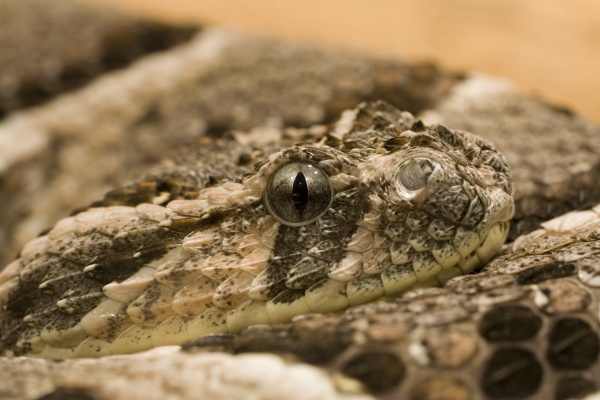Facts About Puff Adder
The puff adder, a venomous viper, inhabits the savannas and grasslands of Africa and parts of western Arabia. Notorious for causing the most snakebite fatalities in Africa, this reputation stems from its widespread presence, frequent human encounters, and aggressive behavior. German naturalist Blasius Merrem first described this species in 1820, identifying two recognized subspecies.
This snake is large and stout, with color patterns that vary depending on the region. Distinctive dark bands mark its head and body, accompanied by chevron-shaped or U-shaped markings along its back and tail. It is distributed throughout sub-Saharan Africa and parts of the Arabian Peninsula, avoiding true deserts, rainforests, and alpine regions.
In terms of behavior, the puff adder is primarily a ground-dweller but is capable of swimming and climbing when necessary. When threatened, it assumes a defensive posture, hissing loudly and striking rapidly with its long fangs. The puff adder is mainly nocturnal, hunting mammals, birds, amphibians, and lizards.
Reproductively, puff adders use pheromones to attract mates, and males engage in neck-wrestling combat dances. Females can give birth to large litters, sometimes exceeding 80 young. In captivity, they can be kept but are prone to overeating if not carefully monitored.
The venom of the puff adder is highly toxic, causing severe symptoms both locally and systemically in humans. Bites can result in necrosis, hemorrhage, intense pain, swelling, and potentially fatal complications if not treated promptly. The fatality rate varies depending on the bite's severity and the quality of medical care, with inadequate clinical management being a significant factor in most deaths.

 Uganda
Uganda